This wasn’t the story I planned on writing this week, but I got an email that caught my attention and took a detour! A few members of our flower team found an older vase in the Sacristy and are trying to find its mate in order to use the pair in the Chapel. I asked if there was an inscription on the bottom of the vase and there was, so of course I had to investigate.
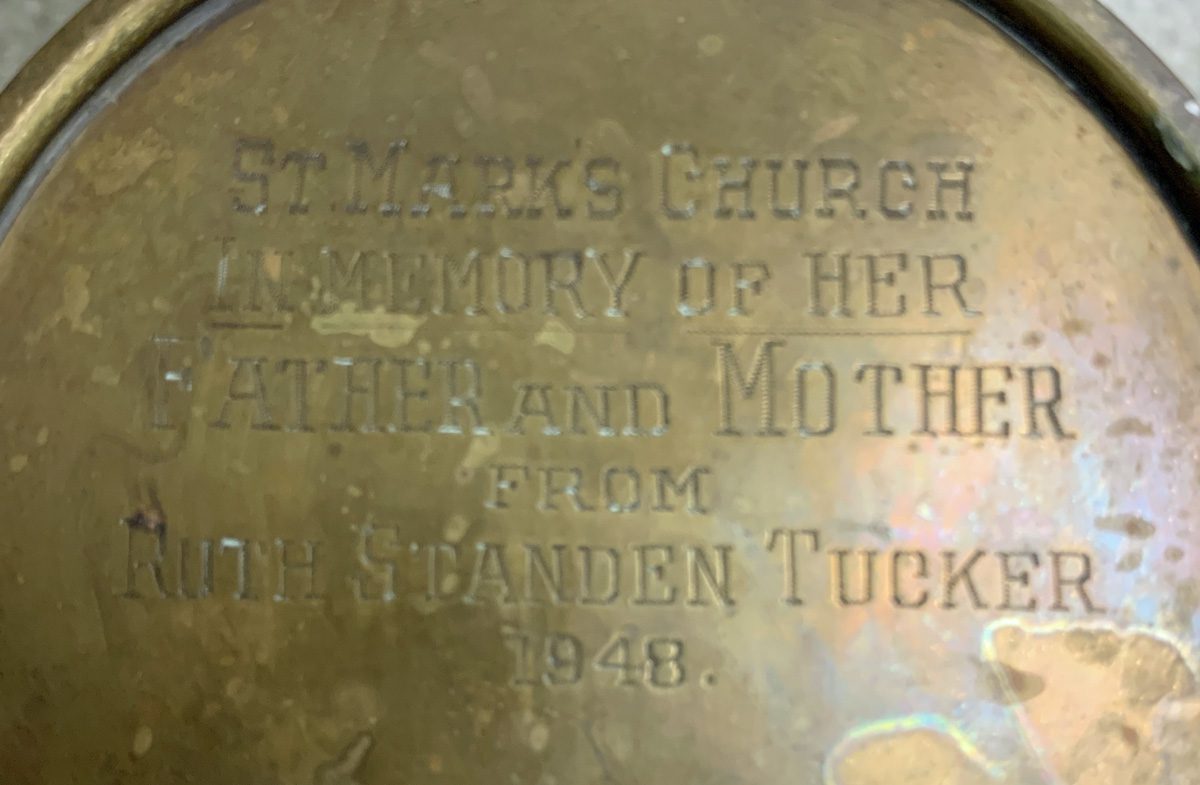
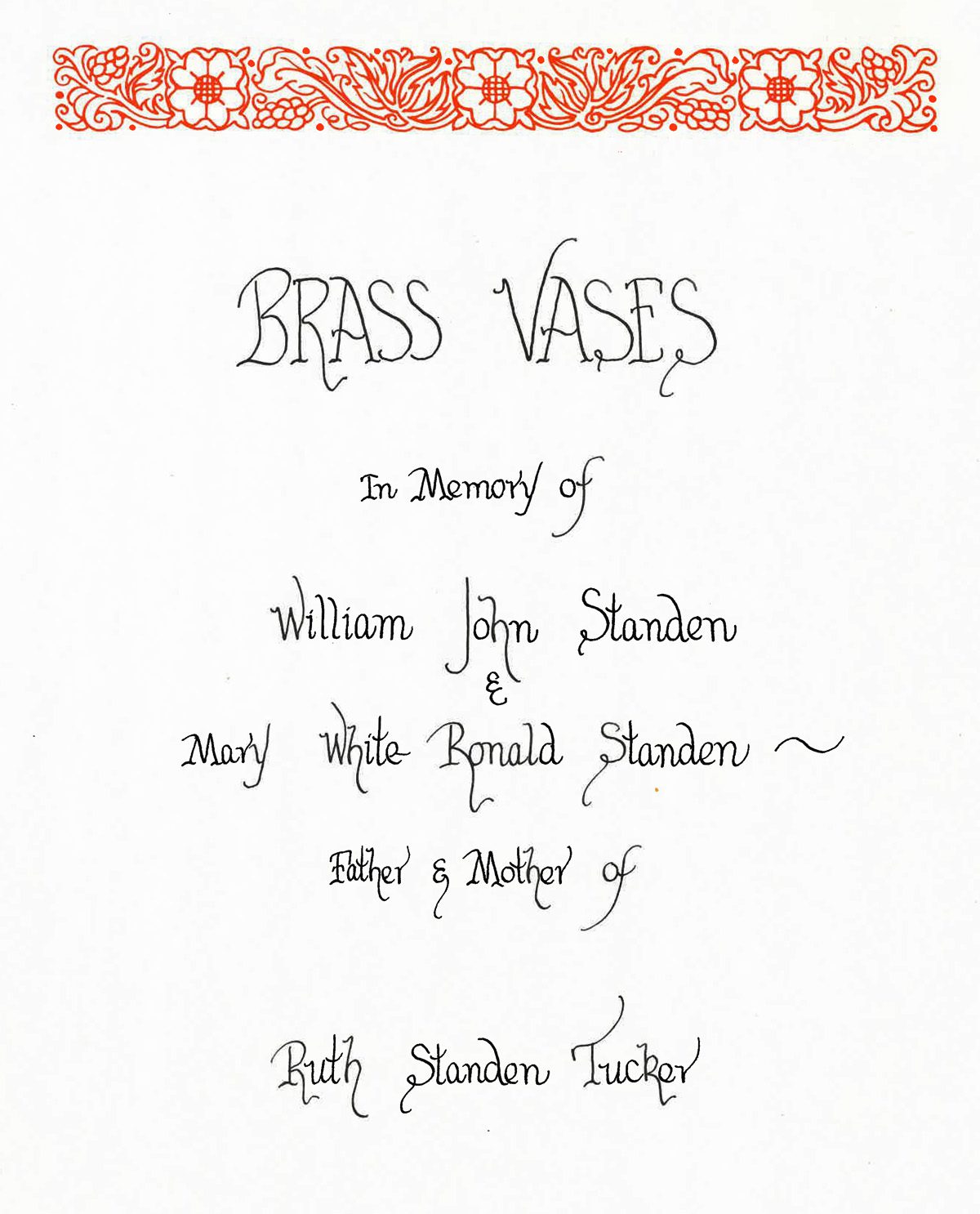
Ruth Standen Tucker gave these vases in memory of her parents – William John and Mary Ronald Standen. Both had died more than 20 years before St. Mark’s was founded, but their story is unusually well documented in their own words. Ruth’s story is just as interesting as her parents, so I’ll tell you about both.
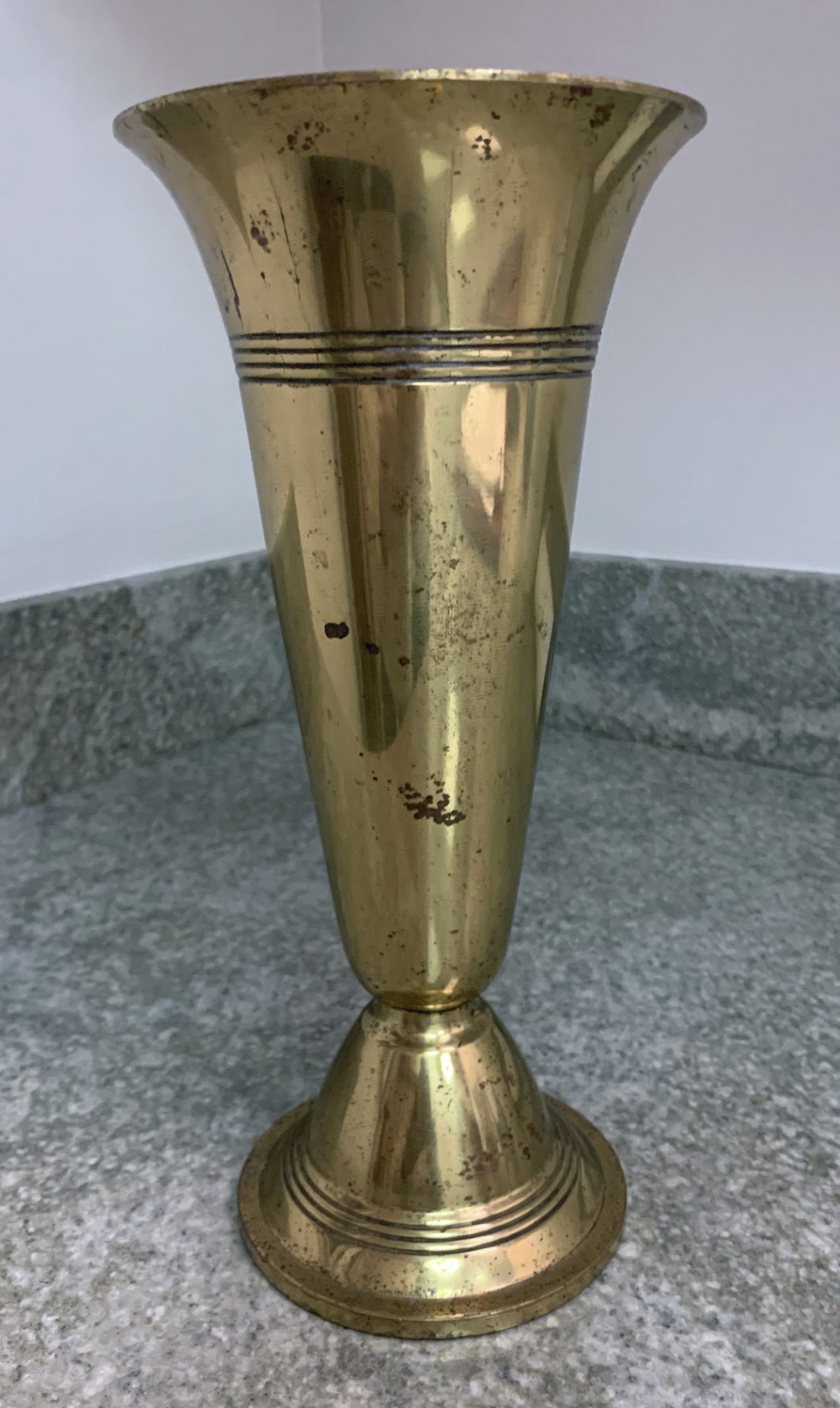
William John Standen was born in 1841 in Bellbroughton, Worcestershire, England. In 1855, when William was 12, his large family all emigrated to Canada. The Standen family were active members of a non-conformist sect called the Ana Baptists as well as active in the temperance movement. When William’s father found it hard to get work due to prejudice against his beliefs, the family migrated to Canada for religious freedom and economic opportunity. The Standen’s settled in the town of Woodville, but in 1864, when William and his brother Thomas were old enough, they were sent to homestead land for the family in Minesing, Ontario, Canada. Homesteading was incredibly difficult work. To learn just how hard, you can read lots more about the Standen family in A Standen Family History.
In 1869, William married Mary White Ronald in Minesing. Mary was born in Glascow, Scotland and eventually became a teacher in London. Her father was a grain merchant and her family emigrated to Canada in 1865 – also for religious and economic opportunity. There’s a charming story about William and Mary’s courtship recorded in family lore. It seems Mary had stolen William’s heart, but he was shy:
“On one occasion as she was going up the lane to his father’s house, she passed him and his brothers, who were clearing a piece of land near the road. ‘Good morning,’ she said cheerily, ‘do you want another hand?’ William stammered some incoherent reply and she ran laughing up to the house…William had to take a lively lot of chaffing from his brothers after that. ‘Why man,’ said Tim, ‘Why didn’t you tell her you wanted a heart, then you’d be sure of a hand?’” (A Standen Family History)
The family stories also detail William’s proposal. He made the proposal in writing. Mary showed it to her mother who said, “Now Mary, this is an offer you must not throw aside lightly.” After a few days, Mary visited the house and gave William a little piece of peppermint candy wrapped in paper. William said he unwrapped the candy by candlelight and could see nothing on the paper, but noticed the words ‘I will’ on the candy (A Standen Family History)
Mary’s father was not happy about the engagement since being a farmer’s wife was such a hard life and his daughter was educated and a teacher. But Mary’s mother convinced him and the couple married and moved into a cedar log house on the Standen farm.

A central part of their life was membership in the Open Communion Baptist Church. William’s diaries relate much detail about their life and church activities. Their faith was central to everything for them. William wrote about his daily life and some of his feelings and reactions in his diary so we get a rare glimpse of the life of the thoughts of a person from the past that shows his concerns and joys and problems and frustrations were the same as ours – just in another time and place. One time he wrote (in a way we can certainly relate to!) about his feelings after a late night church committee meeting:
“I am wearied with them. The Lord make me patient.” (William Standen Diary)
Another time during a severe winter he wrote:
“The Lord help the poor and cold and hungry…I am thankful that I have all things so comfortable and convenient. Much more than I deserve yet God hath given me more.” (William Standen Diary)
He worried about not being able to repay his debt and wrote:
“Lord help me rest contented.” (William Standen Diary)
In 1881, William and Mary’s home burned down. Although none of the family were injured they lost most of the house. The family split up among relatives, and he was grateful for “neighbors who are eager to help.” Astoundingly, the “community gathered around and within two weeks built a new home better than the old one” for the family (William Standen Diary).
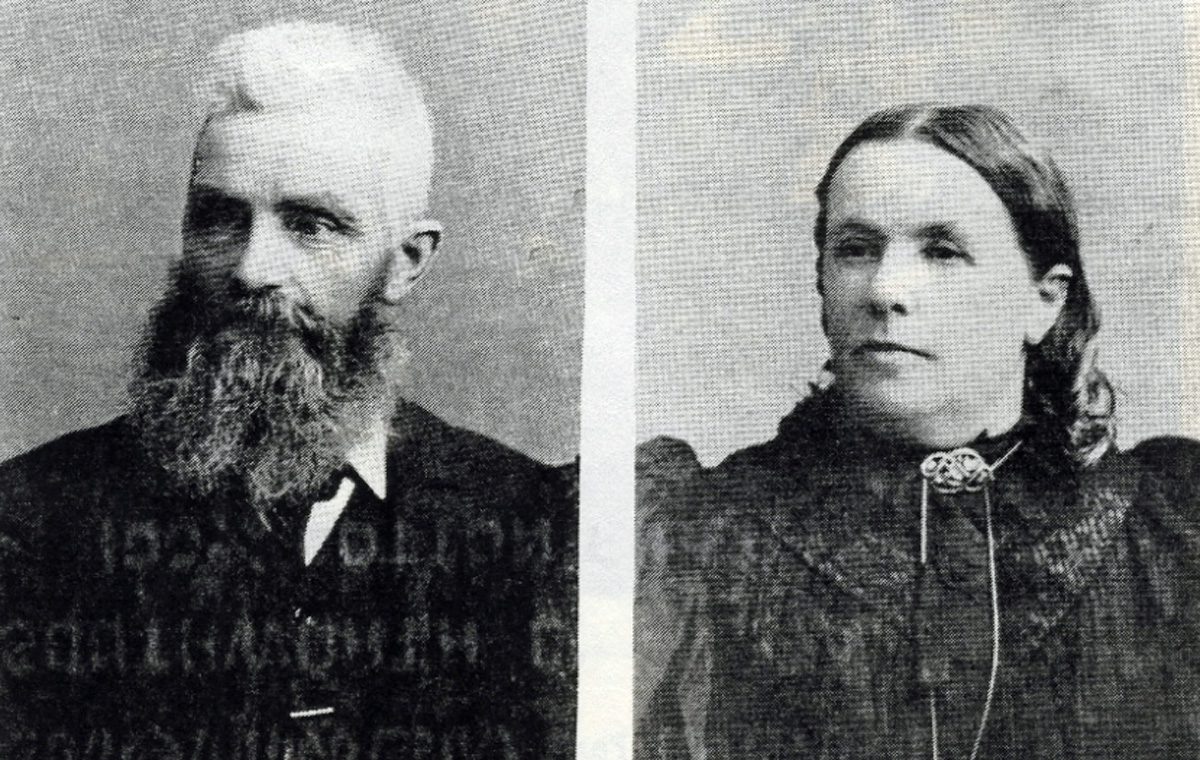
In 1893, William and Mary retired from farming and moved to a house near town. Mary died in 1907. William was presiding elder of the Open Communion Baptist Church for over 30 years and also served as a supply preacher for various churches. In 1905, he felt called to preach the Gospel and became a Baptist missionary in Michigan and later Manitoba, Canada. He tried to homestead again in 1909 in Saskatchewan, Canada, but this was too much for him. William returned to the Minesing area to live with one of his daughters until his death in 1926.
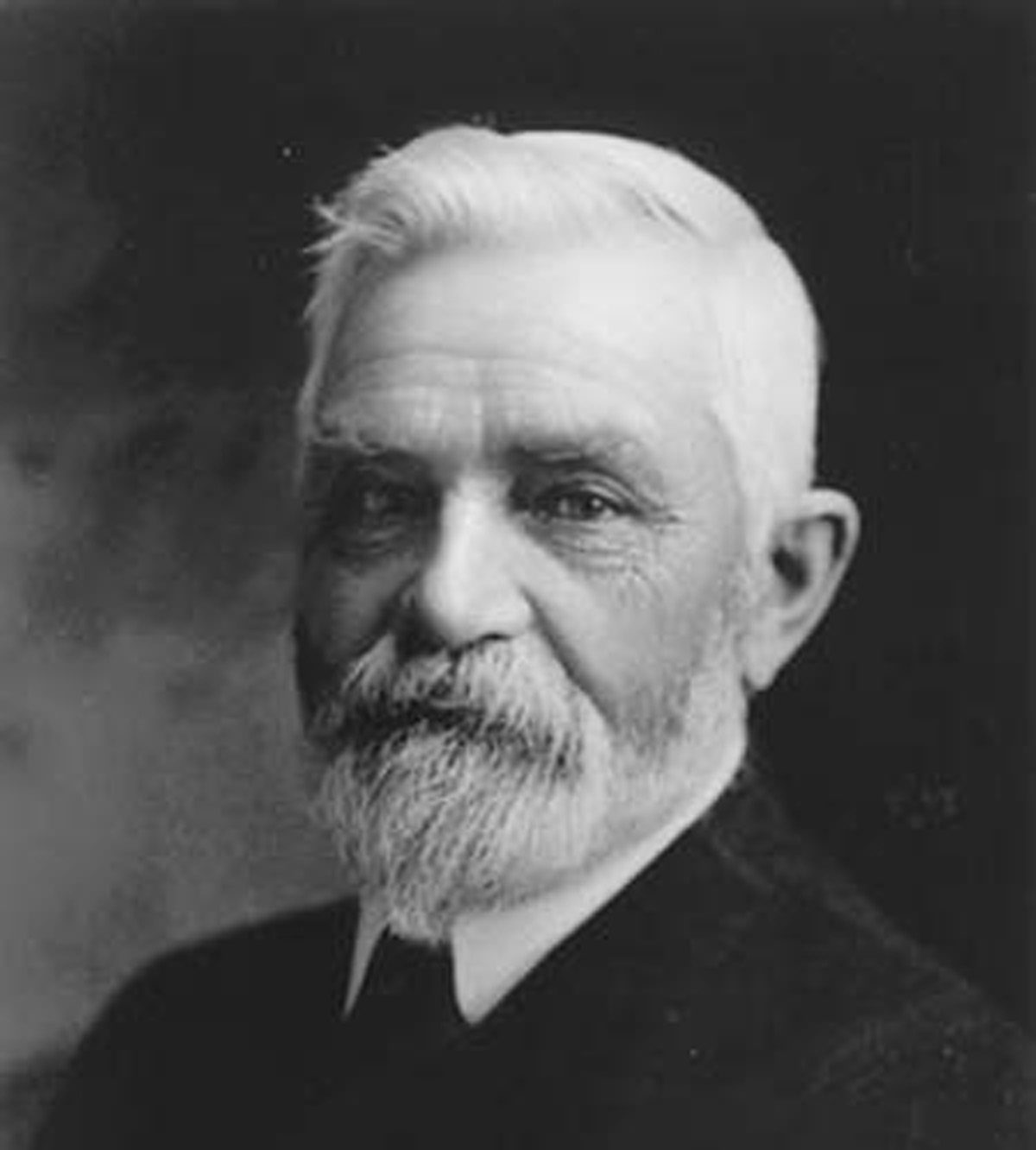
If you want to learn much more detail about the lives of William and Mary, please consult the resources below. There is so much available that we do not have space for here.
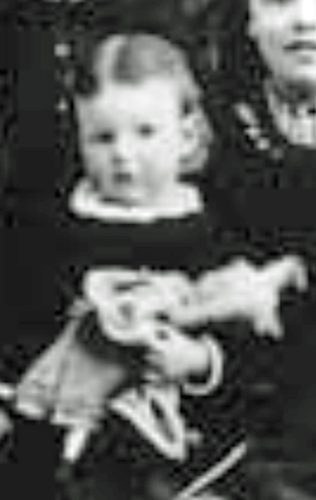
William and Mary’s second to youngest child (the 6th of 7 surviving children), Ruth, was born in 1880 in Minesing, Canada. In his diary William wrote: “About 11:30 am a little girl was born. Mama is doing nicely.” (William Standen Diary)
When Ruth was about 1 years old she was sick and William wrote: “Ruth was worse, not likely to live, but God gave her back again. May she also receive the eternal life in his good time.” (William Standen Diary)
Ruth did survive and grew up on the farm in Minesing – but did not become a farmer’s wife. She left to attend business training school in Toronto. After graduation, she worked as a legal secretary at a law firm in Saskatchewan. Her life changed dramatically when, in 1910, a cousin invited Ruth to move to San Jose, California to take a job at the Lick Observatory. During the years 1910-1913, Ruth was an independent career woman and also had the chance to travel to Europe and see the world. It was while working as the stenographer for the director of the observatory that Ruth met the brilliant astronomer, Richard Hawley Tucker. Richard was 20 years her senior and she suprised her family and friends by secretly marrying him in April of 1914 (San Francisco Examiner).
The Tuckers lived at the observatory for the next 12 years, and raised their two daughters on top of Mount Hamilton. Molly Tucker remembered living on the mountain and “playing games and running like goats on the steep mountainside” (The Missoulian). After Richard’s retirement in 1926, the family moved to Waverley Street in Palo Alto and joined All Saints Episcopal Church. Ruth was involved in so many different activities: The Episcopal Church, The Palo Alto Historical Association, The Palo Alto Women’s Club, the San Francisco Branch of the English Speaking Union, the Palo Alto League of Women Voters and the Red Cross (Palo Alto Times). She seemed to have been an unconventional mother for her time, encouraging her daughters to explore the world and have interesting careers….and they did!
Mary worked as a teacher in a one room schoolhouse, traveled, camped, backpacked and canoed her way around the world, married twice, ran a ranch in Lake County, taught school in Alaska, taught in Yellowstone National Park, and eventually retired to Montana.
As mentioned above, Ruth was part of the group that left All Saints in 1948 and founded St. Mark’s. This could not have been an easy decision because the Tucker family had been members of All Saints for over 20 years. Richard died in 1952 and was still a member of All Saints. Ruth was at all of the early meetings for St. Mark’s and her name was on the founding document. She and daughter Jane officially joined St. Mark’s in December of 1948 (St. Mark’s Archives). She was the founding director of the Altar Guild and gave the two vases for the new Chapel in 1948 (St. Mark’s Archives).
Ruth was active at St. Mark’s until her death in 1955. Her funeral was at 2pm, Friday, April 4th, 1955 at St. Mark’s, but was conducted by the long-time Rector of All Saints – Oscar Green. The family asked that gifts in her memory go to the Rhode Memorial Organ Fund of All Saints and the Memory Fund at St. Mark’s – there were still strong connections to both parishes (Palo Alto Times). Ruth is buried in Maine with her husband Richard.
We can’t find the second vase, but after learning the amazing history of this adventurous family, we cherish the remaining vase that much more. And if anyone has any idea as to what happened to that other vase, please let us know!


